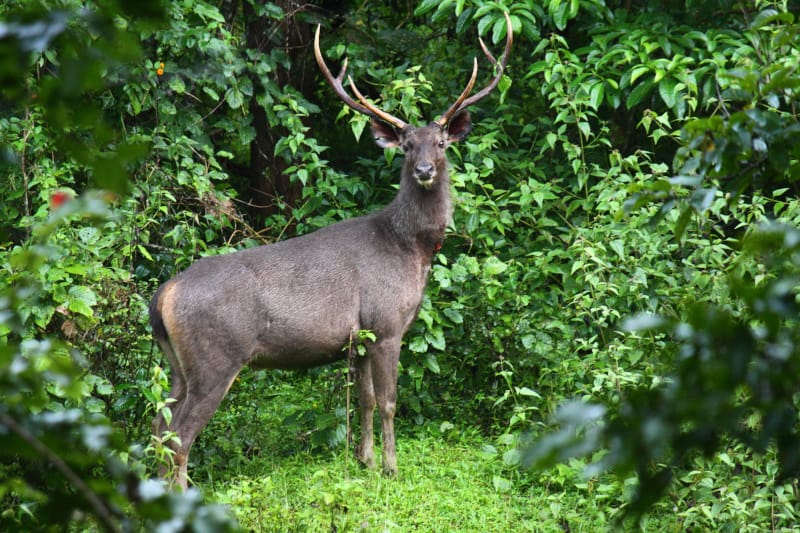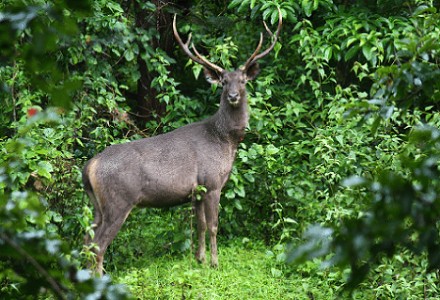
Sambar Facts
- Firstly, and also extremely unfortunately, the IUCN currently lists the marvelous Sambar as Vulnerable for a variety of reasons.
- Most notably, the population of this impressive variety of deer has declined rapidly due to severe overhunting and human encroachment.
- In a rather fascinating evolutionary development, the physical appearance of this species varies quite widely across its endemic range.
- In addition, several recognized subspecies of this extraordinary mammal exist in other portions of its general region.
Related Articles
Photographer: Charles J Sharp
CC License: https://bit.ly/3itf2xO
Sambar Physical Description
Both the size and color of the Sambar varies rather extensively throughout its endemic range. Depending upon regional variations, an average adult may attain a height at the shoulder of between 40-63 in (102-160 cm).
Likewise, the weight of an average adult also ranges from 330-710 lb (150-320 kg). However, exceptional specimens of this animal sometimes reach weights of as much as 1,200 lb (546 kg).
The antlers also typically grow large and rugged and average roughly 43 in (110 cm) in a span. The coat also typically has a shaggy and coarse nature.
In color, the Sambar ranges from a dark gray to a yellowish brown in color. Finally, the tail grows relatively long for a deer, and the adults also possess a short, dense mane.
- Kingdom: Animalia
- Phylum: Chordata
- Class: Mammalia
- Order: Artiodactyla
- Family: Cervidae
- Genus: Rusa
- Species: R. unicolor
Sambar Distribution, Habitat, and Behavior
Firstly, the Sambar evolved as endemic to southern Asia and Southeast Asia. It also occurs in a wide range of habitat types. These include dry forests, subtropical mixed forests, moist evergreen forests, and tropical forests.
This range also extends from the southern portions of the Himalayas to mainland Asia, through parts of China, and all the way to the islands of Borneo and Sumatra.
Within its native range, the Sambar also prefers to inhabit dense regions of deciduous grasses and shrubs. These provide the creature with a measure of protective cover.
This also serves to provide it with readily available food. The animal feeds upon a wide variety of plant species. These include foliage, grass, fruits, and water plants. It also feeds on shrubs and small trees.
It also remains a hardy species, inhabiting elevations of as much as 11,500 ft (3,500 m). The Sambar rarely lives very far from sources of flowing water.
Finally, individuals of this animal live as either nocturnal or crepuscular in their patterns. The adult male typically lives alone most of the time. The females and young live in small groups of up to sixteen individuals and commonly prefer to breed year round.
Species Sharing Its Range
Honeysuckle Mandarin Duck Caracal
Check out our other articles on 10 Extraordinary Reptiles, Rainbow Grasshopper, Bisti De-Na-Zin Wilderness, Amethyst Deceiver

